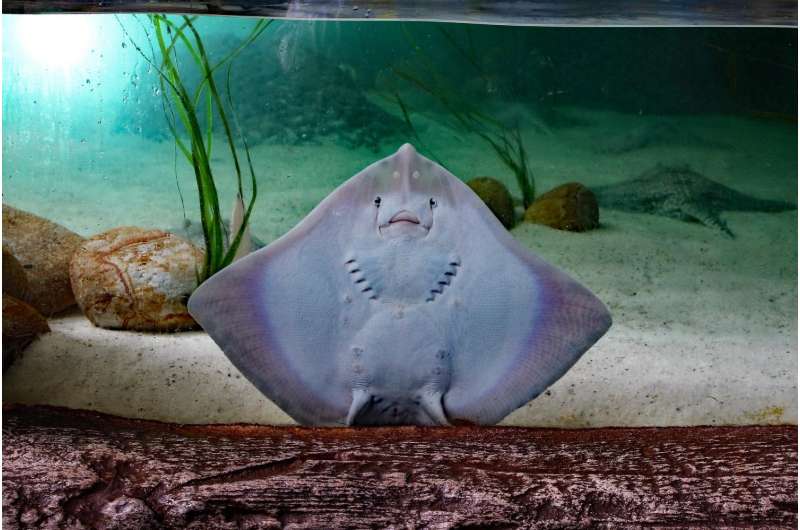Reproductive flexibility in sharks and rays complicates conservation predictions

Stephanie Baum
scientific editor

Robert Egan
associate editor

Sharks, skates and rays adapt their growth and reproduction to changing food availability, a new study reveals.
Led by Newcastle University, the study analyzed how many young and how quickly a generation is replaced—known as reproductive output and generation turnover in 151 species of sharks, skates and rays. The results reveal that these species' life strategies are shaped not just by their evolutionary background, but also by how much food they get.
Published in the journal Ecology Letters, show that when there is more food available and feeding levels increase, species tend to produce more offspring.
The researchers also found that widely used indicators, such as population growth rate, don't always offer a full picture of how these species will respond to pressures such as climate change or fishing. In addition, the authors found that conservation risk (as measured by the IUCN Red List) wasn't linked to a species's reproductive output (how many young they produce) or generation turnover (how quickly newborns mature and produce the next generation of offspring).
By contrast, the approach of integrating demographic data with energy-budget theory, which was used in the study, provides a new way to test different fishing scenarios and better estimate what levels of fishing can be sustainable.
This method combines information on how sharks, skates and rays—collectively known as elasmobranchs—allocate energy to growth, survival and reproduction, and uses it to define a "life-history space" informed by species energetics and feeding. The result is a quantitative, mechanistic basis for predicting how changes in food availability or fishing pressure could shape species' life strategies.
Study lead author, Sol Lucas, a Ph.D. researcher at Newcastle University's School of Natural and Environmental Sciences, said, "Our findings show that sharks, skates and rays are flexible in their growth and reproduction, adjusting to the food availability in their environment.
"These life-history strategies shape population growth and recovery, making them vital for understanding how species respond to population declines. Looking ahead, by linking energy budgets to life-history strategies, we can gain a clearer picture of which species are most at risk from pressures such as overfishing and environmental change."
Study lead author, Dr. Isabel Smallegange, Senior Lecturer in Population Biology at Newcastle University's School of Natural and Environmental Sciences, added, "In marine ecology, understanding how feeding dynamics influence life-history strategies is crucial, especially for elasmobranchs, which face heightened conservation concerns worldwide. However, comparative data across species and feeding regimes have been scarce.
"To address this gap, our study integrates demographic data with energy-budget theory to analyze 151 elasmobranch species, exposing how varying feeding levels shape developmental and reproductive strategies. By revealing previously unappreciated plasticity in life-history traits, this research brings fresh insight into how these species may respond to ecological challenges and offers a more informed basis for effective conservation actions."
The authors recommend further research to explore whether changes in the environment make different species more flexible in how they grow and reproduce, and how this flexibility affects their survival and ability to cope with change.
More information: Sol Lucas et al, Changing Feeding Levels Reveal Plasticity in Elasmobranch Life History Strategies, Ecology Letters (2025).
Journal information: Ecology Letters
Provided by Newcastle University

















